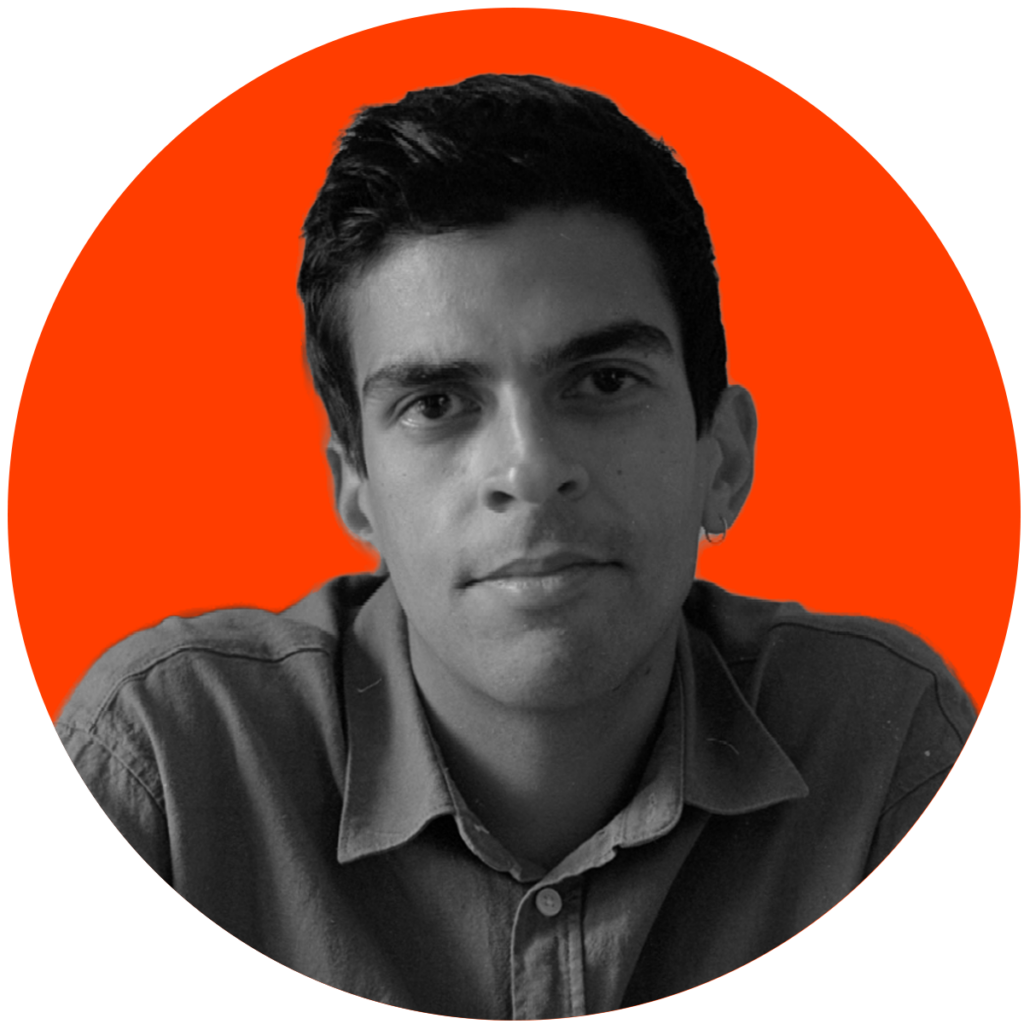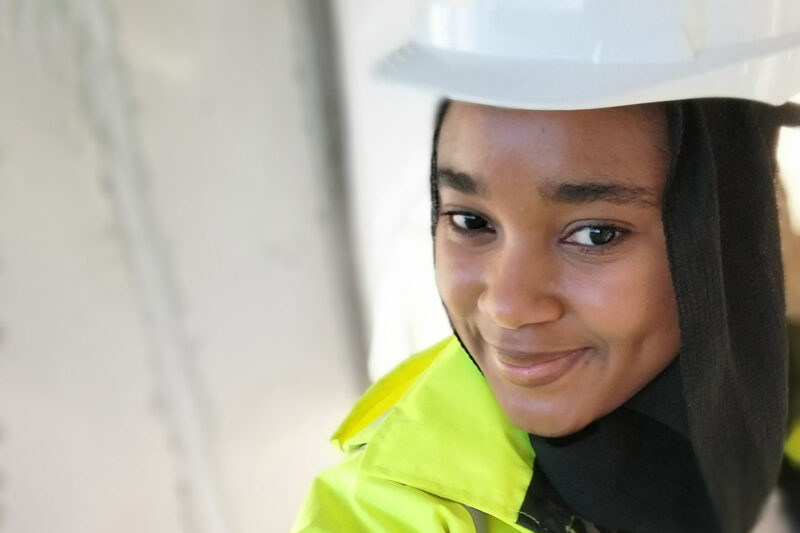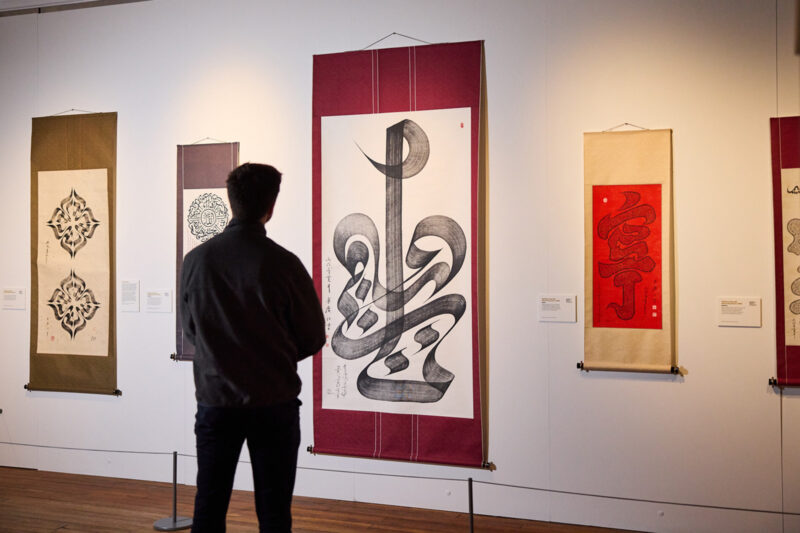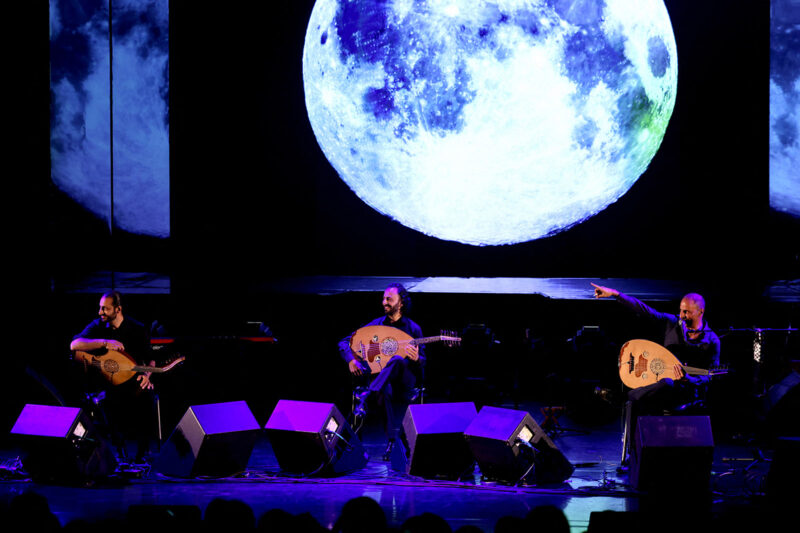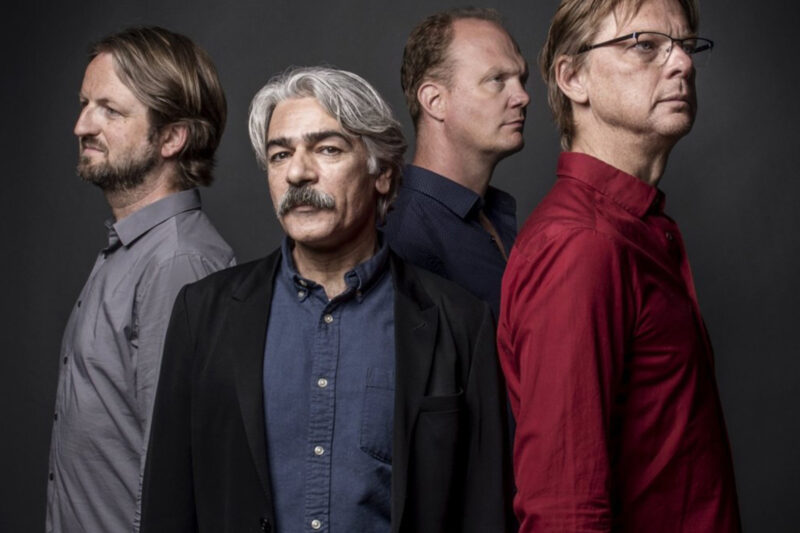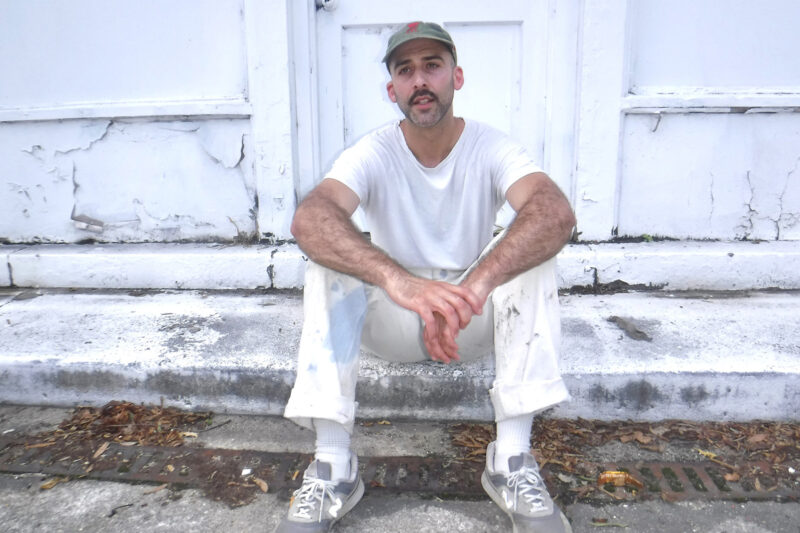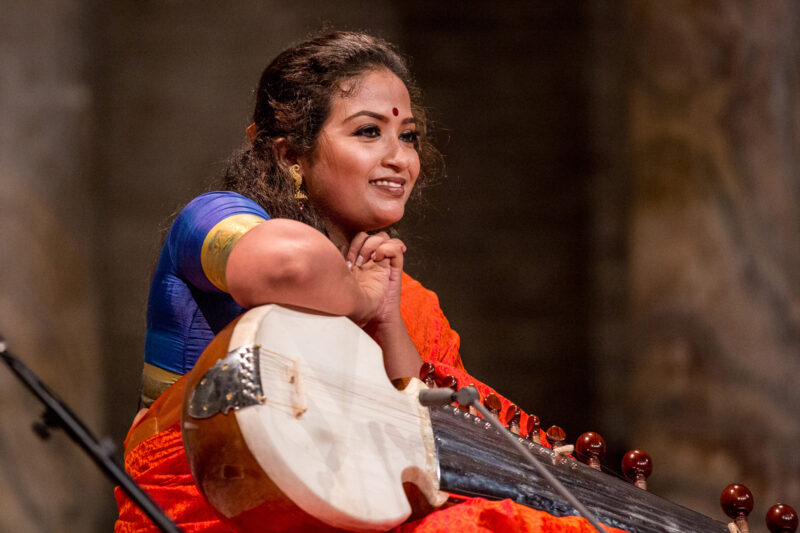The forward-looking fusions of Sheherazaad
The San Francisco-based singer is the latest in a wave of artists winning widespread acclaim with innovative reinterpretations of traditional South Asian music
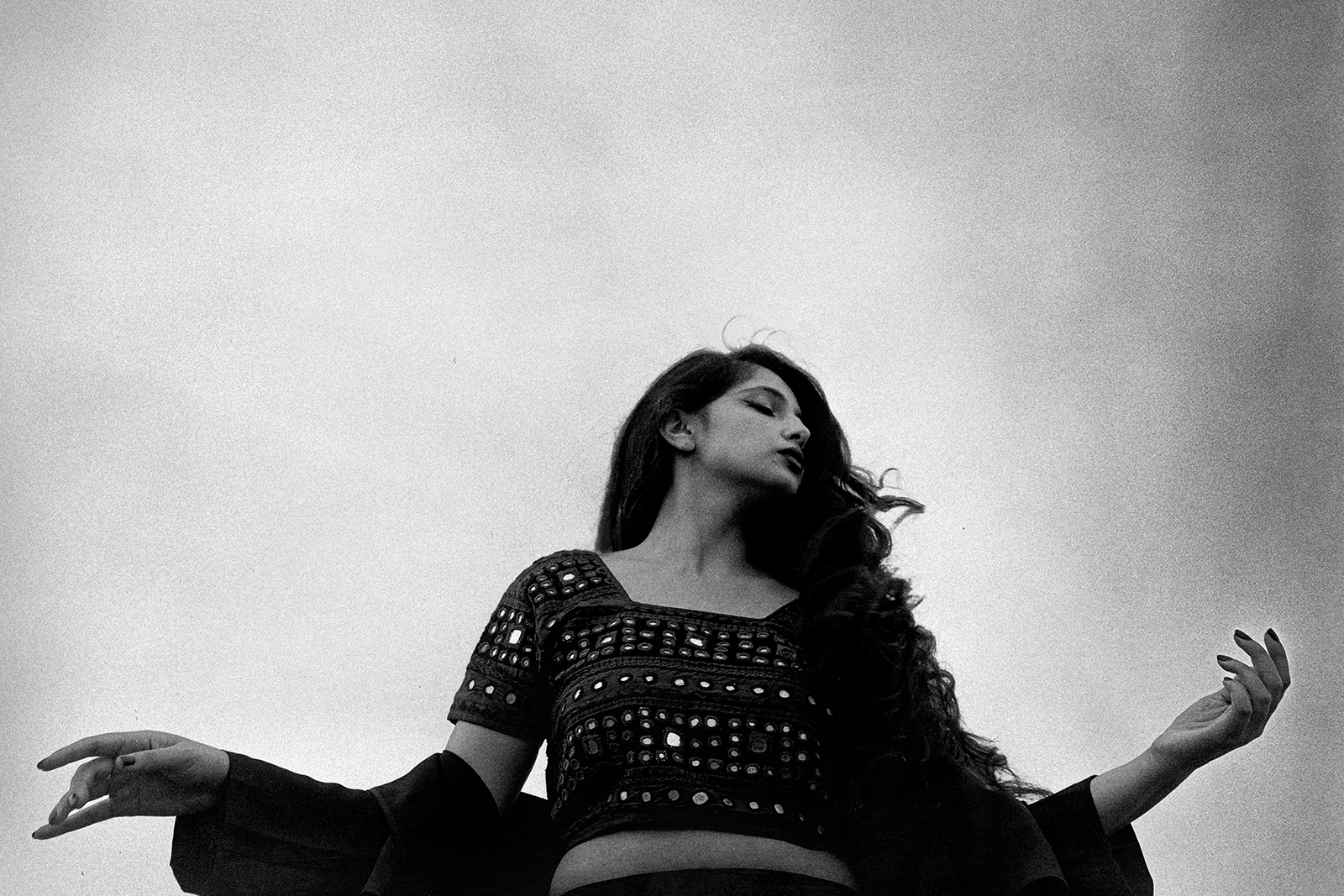
Over the past few years a rich seam of US-based artists has emerged, drawing upon and creating innovative fusions of classical South Asian music.
In 2022, singer Arooj Aftab won a Grammy for the single Mohabbat, a consummate blend of Sufi poetry and western folk instrumentation. Starting in 2013, sitar player Ami Dang has reimagined her chosen instrument across four albums, setting it against a backdrop of rumbling drones and ambient electronic textures. Earlier in 2024, the New York-born and south India-raised vocalist Ganavya released Like the Sky I’ve Been Too Quiet, an album on which the expansive freedom of spiritual jazz meets the rhythmic structure of traditional ragas.
San Francisco-based singer Sheherazaad is among the latest to win widespread acclaim by imaginatively reinterpreting centuries-old South Asian musical forms. Her debut EP Qasr, released in March, combines flamenco guitars, plucked violins and double bass with warm Hindi and Urdu vocals to produce a genre-bending collection of wistful and subtly unsettling songs.
When we spoke she was ensconced in her home studio, working on ideas for her next album and preparing for a European tour that started on 25 October in Rome and continues through Germany, the Netherlands, Belgium and the UK. She has quickly caught the attention of a global audience.
“The past year has been a blur of chaos, which has felt both incredible and really hard,” she said.
Sheherazaad was born into a musical family. Her parents met while in a California-based Bollywood covers band and her maternal grandmother was one of the first concert promoters to bring acclaimed Indian musicians such as Ravi Shankar and Zakir Hussain to the US west coast. She started singing at the age of six, but the journey to truly find her voice has been long.
“At 15, I stopped singing altogether,” she said. “I was born and brought up in the Bay Area where I learned Broadway and jazz repertoire, then went to India for boarding school as a teenager. There, I felt strange singing the songs I knew in my accent, and uncertain about approaching new material in Hindi. I was between the two, so I went quiet.
“I was listening to my parents’ Bollywood music at home, pop on the radio and learning how to sing jazz and musical repertoire formally. From a young age, I had that third-culture feeling of underlying disconnect.”
As her musical education progressed, that sense of dislocation became more profound, leading her to focus on other modes of performance.
“I just didn’t know where I fit in music, since I couldn’t find songs that I resonated with or felt like I could sing,” she said. “I began performing in Bollywood dance fusion troupes and was becoming quite serious about theatre until I took a South Asian American lit class while studying at NYU. There, I learned about the Asian underground in the UK and that changed everything for me.”
Inspired by the 1990s movement in which British Asian musicians such as Talvin Singh and Nitin Sawhney incorporated their diasporic heritages with DJ culture and dancefloor-focused electronic music, Shehrazaad decided it was time to refine her own musical vision.
“I realised I needed to find something new, rather than sing other people’s songs, so I started making bad noises to see what would come out,” she says. “It was very trial-and-error because I started with Farsi music, then Arabic, then decided to study Hindustani music in the Bay Area and became really steeped in ragas.”
In 2016, while exploring the range of her voice and linguistic abilities, Sheherazaad saw Arooj Aftab play a small Brooklyn venue. “I was completely blown away by her performance. It felt like exactly what I should be doing,” she said. “I asked to take voice lessons from her, but she told me no, as it would mean I’d just end up sounding like her.”
It wasn’t until 2020, when Sheherazaad enrolled for a master’s degree in performance at California Institute of the Arts, that Aftab got in touch and floated the idea of working together.
“I had to make a record to workshop on the course, which I ended up putting online and Arooj heard it,” she said. “She sent me a message out of the blue saying, ‘Do you want me to produce the next one?’”
The pair began to experiment and hit upon a unique blend of soaring Indian classical melody with the warmth of drums, bass and guitars. Most importantly, Shehrazaad’s deep and expressive voice sat front and centre.
“It felt important to use my natural, low voice because so much of the Bollywood music I grew up listening to had the female voice pitched high and infantilised,” she said. “I found out the women were made to sound like that because it suited the male range better.”
The resulting five tracks on Qasr are minimal yet insistent. From the plaintive finger-picked acoustic guitar of the opening track, Mashoor, to the pizzicato plucking and spritely melodies of Dhund Lo Mujhe, the release combines equal measures of drama and tender feeling.
Speaking of her decision to be known only by her stage name, Sheherazaad explained that doing so has empowered her to explore her own creativity to its fullest extent.
“I never felt connected to my actual name and I wanted to embody a different incarnation of my body onstage — to take on a character that’s bolder than me,” she said. “There weren’t many cool South Asian characters growing up that I identified with, but once I read One Thousand and One Nights as a kid, I fell in love with the character of Scheherazade and the way she uses her artistry to basically stop a genocide. It’s a name that goes beyond the constraints of caste and history.”
Sheherazaad plays Pitchfork Music Festival London on 7 November
 Newsletter
Newsletter

